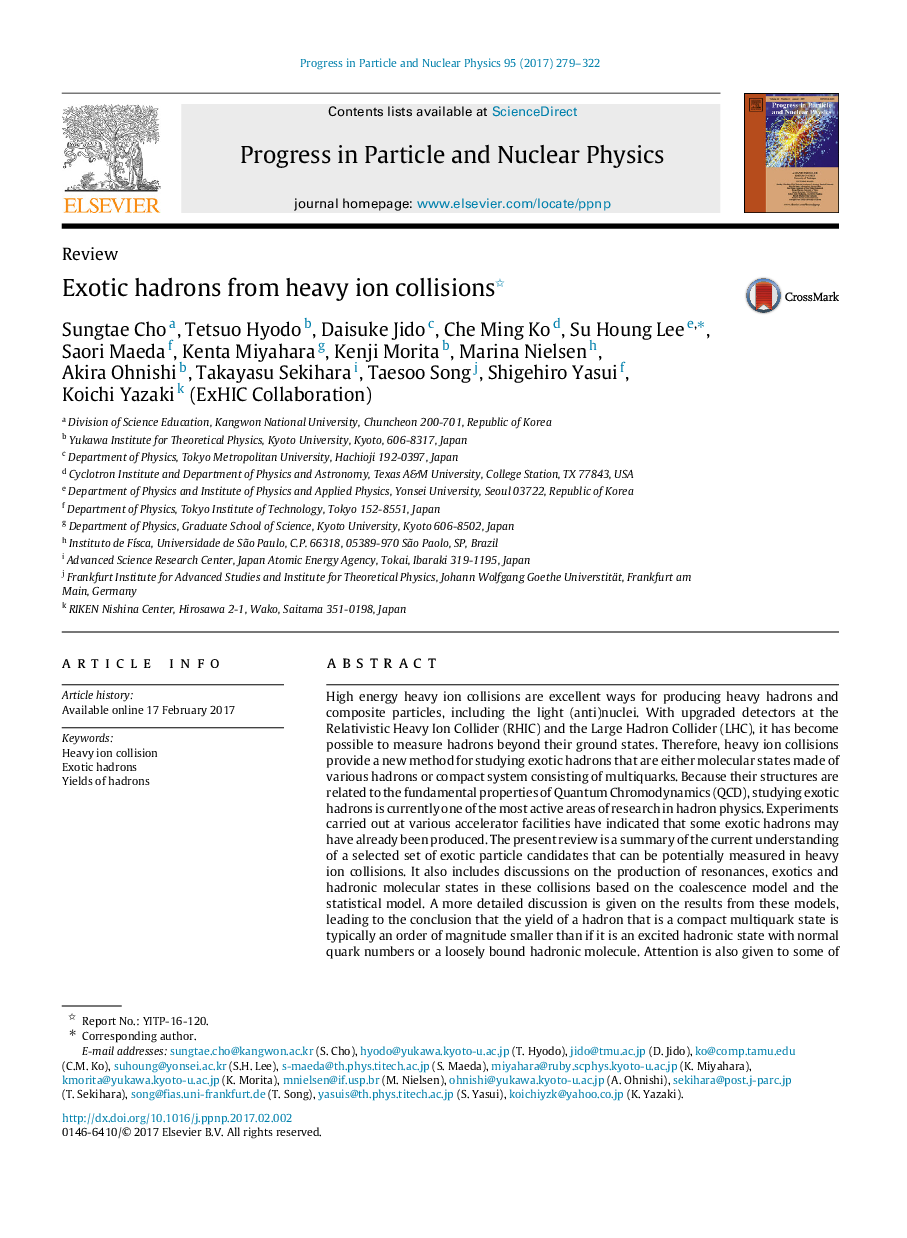| Article ID | Journal | Published Year | Pages | File Type |
|---|---|---|---|---|
| 5495606 | Progress in Particle and Nuclear Physics | 2017 | 44 Pages |
Abstract
High energy heavy ion collisions are excellent ways for producing heavy hadrons and composite particles, including the light (anti)nuclei. With upgraded detectors at the Relativistic Heavy Ion Collider (RHIC) and the Large Hadron Collider (LHC), it has become possible to measure hadrons beyond their ground states. Therefore, heavy ion collisions provide a new method for studying exotic hadrons that are either molecular states made of various hadrons or compact system consisting of multiquarks. Because their structures are related to the fundamental properties of Quantum Chromodynamics (QCD), studying exotic hadrons is currently one of the most active areas of research in hadron physics. Experiments carried out at various accelerator facilities have indicated that some exotic hadrons may have already been produced. The present review is a summary of the current understanding of a selected set of exotic particle candidates that can be potentially measured in heavy ion collisions. It also includes discussions on the production of resonances, exotics and hadronic molecular states in these collisions based on the coalescence model and the statistical model. A more detailed discussion is given on the results from these models, leading to the conclusion that the yield of a hadron that is a compact multiquark state is typically an order of magnitude smaller than if it is an excited hadronic state with normal quark numbers or a loosely bound hadronic molecule. Attention is also given to some of the proposed heavy exotic hadrons that could be produced with sufficient abundance in heavy ion collisions because of the significant numbers of charm and bottom quarks that are produced at RHIC and even larger numbers at LHC, making it possible to study them in these experiments. Further included in the discussion are the general formalism for the coalescence model that involves resonance particles and its implication on the present estimated yield for resonance production. Finally, a review is given on recent studies to constrain the hadron-hadron interaction through correlation measurements in heavy ion collisions and their implications on the interpretation and the possible existence of exotic states in hadronic interactions.
Keywords
Related Topics
Physical Sciences and Engineering
Physics and Astronomy
Nuclear and High Energy Physics
Authors
Sungtae Cho, Tetsuo Hyodo, Daisuke Jido, Che Ming Ko, Su Houng Lee, Saori Maeda, Kenta Miyahara, Kenji Morita, Marina Nielsen, Akira Ohnishi, Takayasu Sekihara, Taesoo Song, Shigehiro Yasui, Koichi Yazaki, (ExHIC Collaboration) (ExHIC Collaboration),
